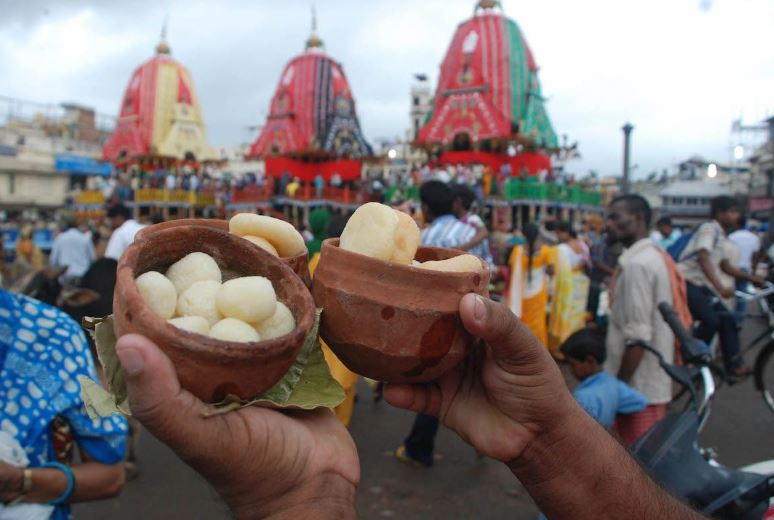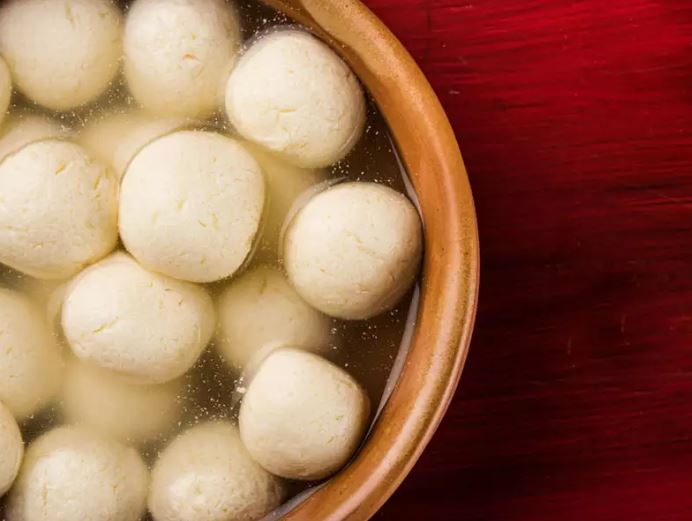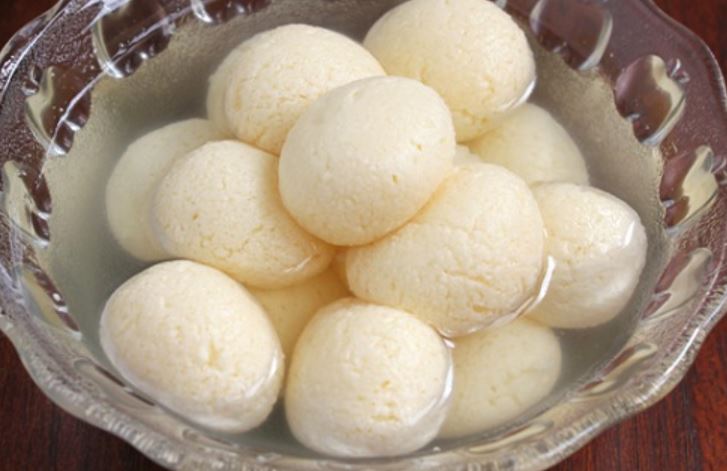OdishaPlus Bureau

According To historians and Jagannath Temple researchers, The Rasgolla originated from ‘Khira Mohana’ that Is traditionally offered as Bhog to Goddess Lakshmi since the 12th century.
When Lord Jagannath Returns back after a 9 day sojourn from Gundicha to Shree Mandir, Goddess Lakhsmi is annoyed at being left behind and closes the doors of the main temple. Hence the Lord offers her a Rasgolla and thus pacified the Deity allows entry of the Holy Trinity into the main shrine at Puri referred to as Niladribije. It is the welcome festival of Lord Jagannath to Shree Mandir.

Before the ritual of Niladribije, another celebration by the devotees takes place on the Fifth day of Rath Yatra. Goddess Lakshmi enters the Gundicha temple and asks Lord Jagannath to come back home at the earliest and to please his wife Mahalakshmi, Lord Jagannath gives his consent in the form of a garland called Agyan Mala. Thus the goddess departs from Gundicha temple but orders one of her servants to damage a part of Lord Jagannath’s chariot Nanadighosa. This ritual is called Hera Panchami.
The dialogue involving Lord Jagannath and Goddess Lakhsmi is enacted by two sevayats either side of the closed gates is called Bachanika. Historians point out that perhaps this is the prime factor in asserting Rasgolla as a delicacy originated in Odisha.

According to Odia historians and Jagannath Temple researchers, the Rasgolla originated from ‘Khira Mohana’ that is traditionally offered as bhog to Goddess Lakshmi since the 12th century. There are mentions of Rasgolla in other older texts of Odisha during the 18th century and hence the claim to legitimize Rasgolla as an Odia recipe. Years have passed but the ritual of offering Rasgolla to Goddess Lakshmi by Lord Jagannath to pacify her rage is still in place in Puri and celebrated on Niladribije.





















